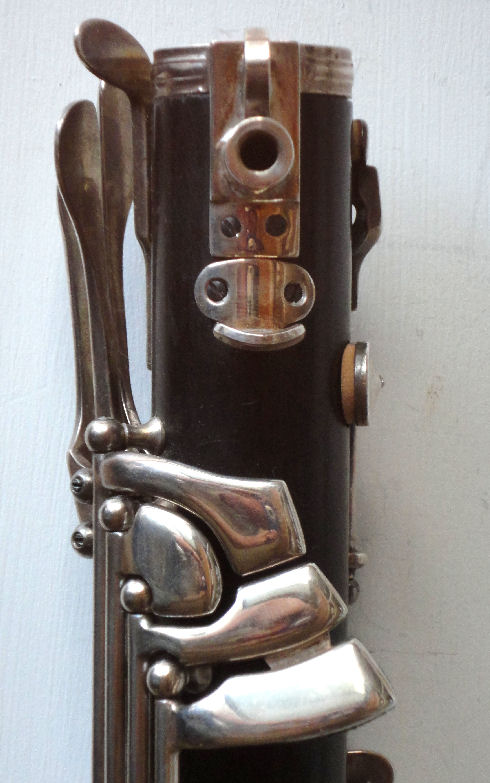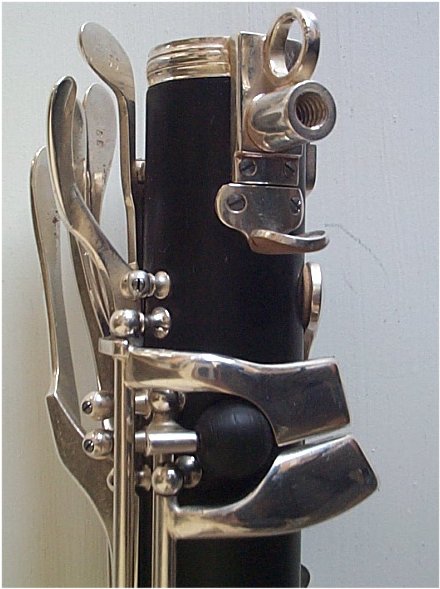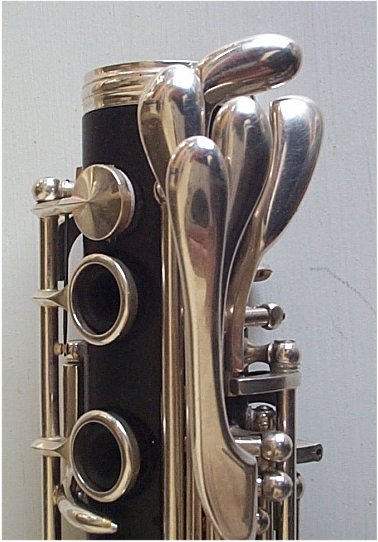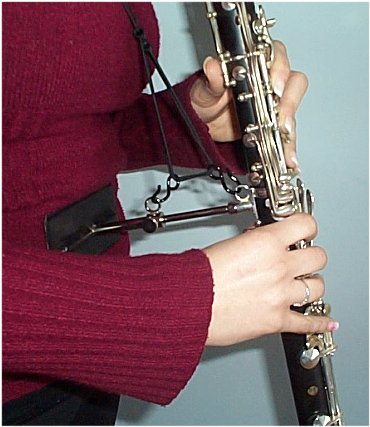 |
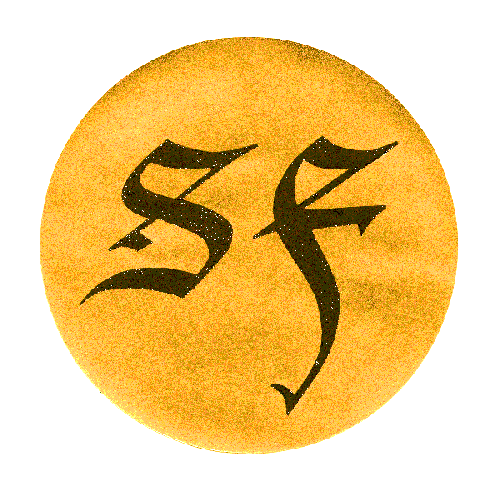 |
|||||||||||
| home
reproduction
historical woodwinds
|
The so-called basset clarinet, i.e., a soprano clarinet with the lower range extended to written C (or B; see below) is now almost universally recognized as the correct instrument for performance of the Mozart Concerto K622, Quintet K581 and the late operas. There are two options for obtaining a basset clarinet: (1) An existing instrument can be converted, by grafting an extension onto the lower joint and adding the basset keywork; (2) A complete basset clarinet may be ordered. (Complete new basset lower joints to fit existing clarinets are no longer offered, due to the practical difficulties of ensuring total compatibility and optimum tuning when working at long distance. In addition, the price of a complete lower joint approaches the total cost of a conversion plus a good secondhand donor clarinet.) Converting a conventional clarinet to basset status is the simplest, quickest and most economical route. Functionally it is the same as a basset clarinet built from scratch, with no differences in tuning or other playing qualities. Regrettably, because of the flared lower joint bore of the French clarinet and because of tone hole locations, it is not practical to make a removable basset section that could simply be added to a clarinet without modification. While most basset clarinets are in the key of A (for the Mozart Concerto and Quintet), a number have also been made in Bb (for use in Mozart operas, particularly the aria Parto, parto from Tito) and C (especially useful for opera orchestra work). Though basset clarinets offered by other makers have C as the lowest note, current research (click here for information) indicates that low B may have been used by Mozart. Thus a range to B is offered as an option, either integral with the basset joint or as a removable section. Standard keywork has the low Eb key for the right hand little finger, and three right thumb keys for D, C#, C (and a fourth for B, if fitted); the touchpieces are shaped to allow very easy transitions between notes. A popular option is a low D key for the left hand little finger, in addition to the thumb key; also available is a key for the right hand little finger, producing either low D or C#, or convertible for both. An alternate Ab/Eb lever for the left hand is recommended, and ordered by most customers. For some thoughts on the basset key arrangement, click here. A support
mechanism, using an abdomen brace and neck strap, allows easy holding
of the instrument and frees the right thumb to operate keys. (This
is also recommended for playing a normal clarinet, in cases of strain or
injury to the right hand.)
Basset clarinet lower joint
in A, with range to low B
Keywork for right thumb (left,
to low B; right, to low C, with roller ball for C#)
Keywork left hand little
finger (including L4 Ab/Eb and L4 low D)
Support mechanism (abdomen brace and neckstrap)
|

